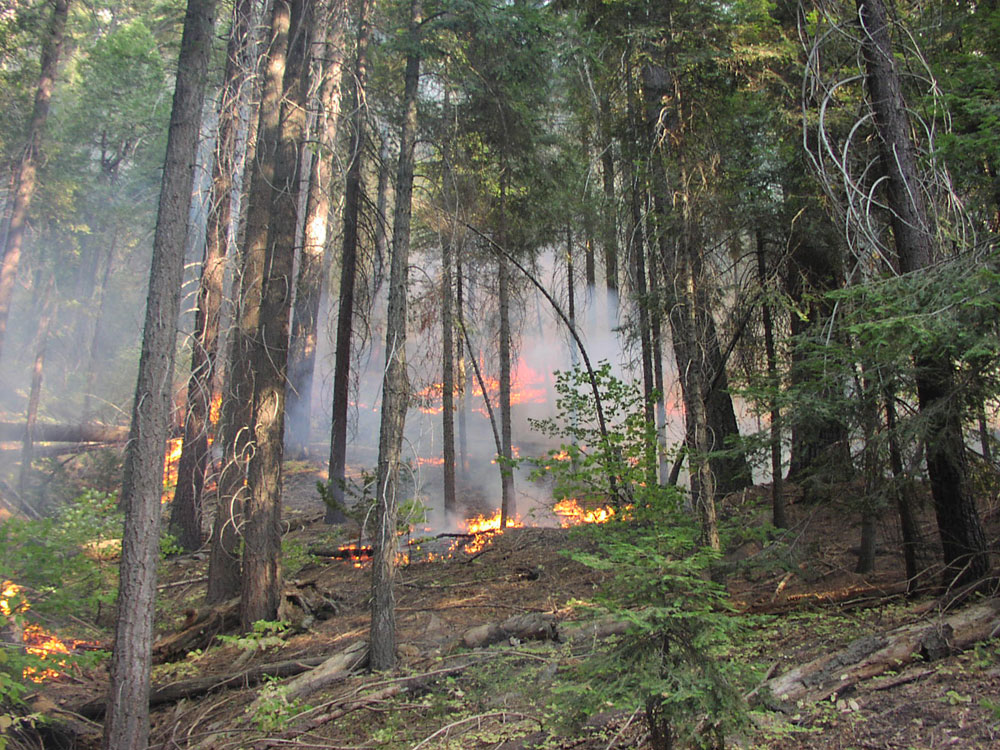Drought-Weakened Trees More Likely to Die in Fires

Prolonged droughts are causing more trees to die in forest fires in the western United States, according to a new study that looked at decades of controlled fire data.
Climate change is heating up and drying up the American West, and these two changes are weakening trees, which makes them less able to resist the effects of fire, the authors of the study conclude.
"What we're interested in is trying to understand what the climate might be in relation to a fire event," Phil van Mantgem, a research ecologist with the U.S. Geological Survey who led the research, told LiveScience. [How Will Climate Change Impact Western Wildfires?]
"A lot of [previous] studies were trying to understand, or make predictions, about what the fire regime will look like going forward with climate change, but they were focused on the physical aspects," Van Mantgem said. "We were interested more in the biological context of this."
Dry conditions kill, with caveats
In higher altitudes of the western United States (where trees tend to grow), temperatures jumped as much as 0.9 degrees Fahrenheit (0.5 degrees Celsius) per decade since the late 1980s, previous studies showed. Climatologists believe fires are increasing at the same time because higher air temperatures, coupled with lower humidity, makes forests drier and better fuel for wildfires.
Van Mantgem's team studied the effects of controlled fires on trees, because the information about these forests before and after these events is entered into an ecological database called FFI (FEAT/FIREMON Integrated). They extracted records of tree fire injuries and fire-related deaths between 1984 and 2005 that occurred after controlled burns by the National Park Service.
Get the world’s most fascinating discoveries delivered straight to your inbox.
From surveying thousands of trees in more than a dozen western parks, they found that a tree burned in dry conditions was more likely to die than a tree similarly burned in wet conditions. It's still unclear how fire directly causes the deaths, but the theory is that xylem tubes (which carry water from the ground through the tree) are damaged by the fire so that water cannot transport efficiently through the tree.
There were a few limitations with the work: Climatic conditions were largely based on estimates from nearby weather stations, not direct measurements, as many parks and forests don't have weather stations. Also, no uncontrolled fires were included in the study, and effects such as bark beetles or parasites on stressed trees were not measured.
Different than uncontrolled burns
Predicting the effects of climate change on trees is difficult because some of the data is not hard numbers, said Philip Higuera, a fire ecologist at the University of Idaho who did not participate in the study.
Ecologists typically use the term "fire severity," for example, to describe how a tree is hurt, a measurement that relies on qualitative observations and less on quantitative measurements. It's similar to the Mercalli intensity scale in earthquakes, Higuera said, which notes if things fell off of walls or if foundations cracked to tell how severe a quake was.
Using controlled burns was perhaps the study's most severe limitation, Higuera added. These fires typically take place at lower altitudes (close to human habitations) and at intensities not necessarily meant to kill trees. Uncontrolled fires, often in the upper reaches of a forest, burn more intensely and kill more often, he said.
With that said, overall Higuera applauded the research. "It highlights a potentially important but an underappreciated mechanism into how climactic change can impact forests," he said.
The study was published in the journal Ecology Letters and includes participation from the U.S. Geological Survey, the National Park Service and the U.S. Forest Service.
Follow Elizabeth Howell @howellspace. Follow us @livescience, Facebook& Google+. Original article on LiveScience.com.

Elizabeth Howell was staff reporter at Space.com between 2022 and 2024 and a regular contributor to Live Science and Space.com between 2012 and 2022. Elizabeth's reporting includes multiple exclusives with the White House, speaking several times with the International Space Station, witnessing five human spaceflight launches on two continents, flying parabolic, working inside a spacesuit, and participating in a simulated Mars mission. Her latest book, "Why Am I Taller?" (ECW Press, 2022) is co-written with astronaut Dave Williams.


